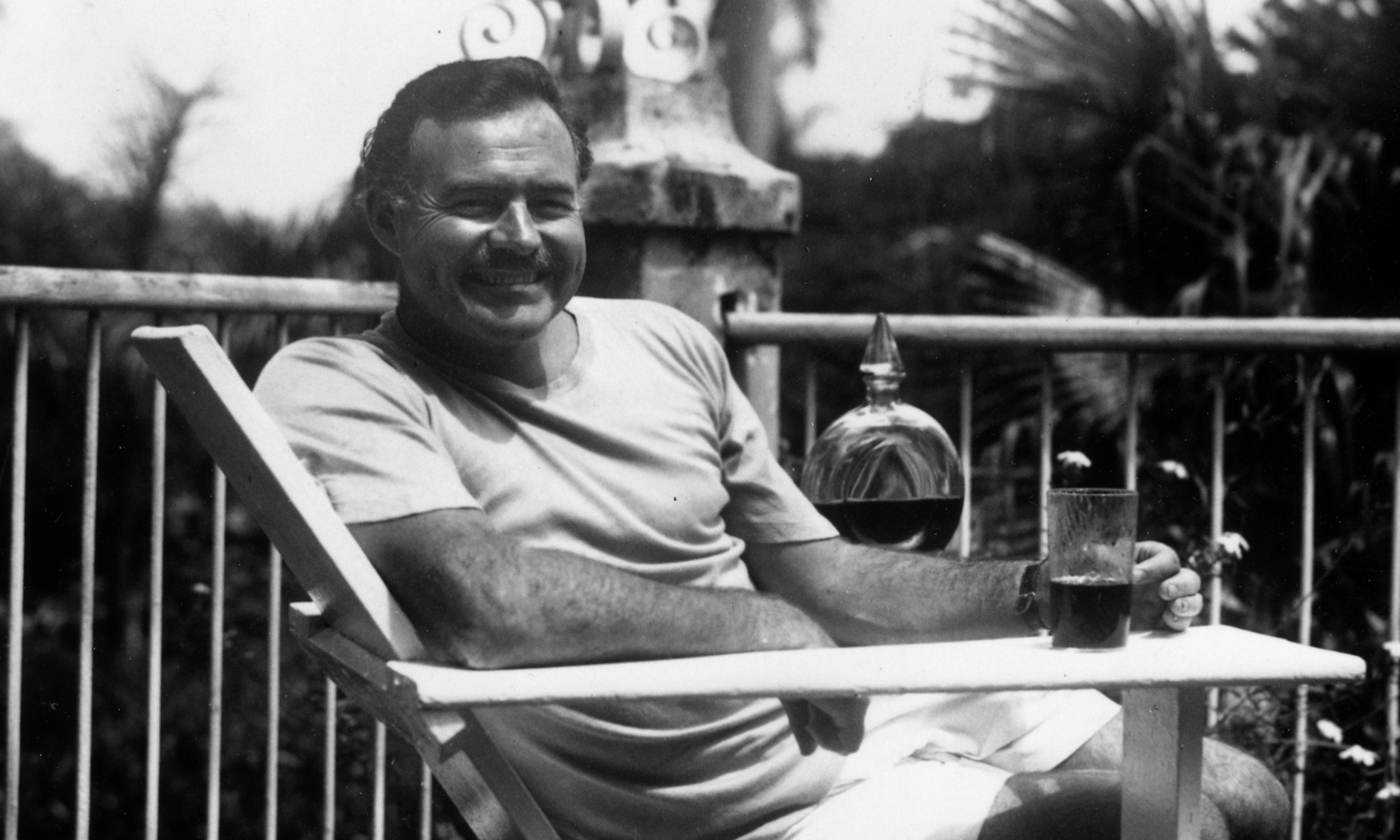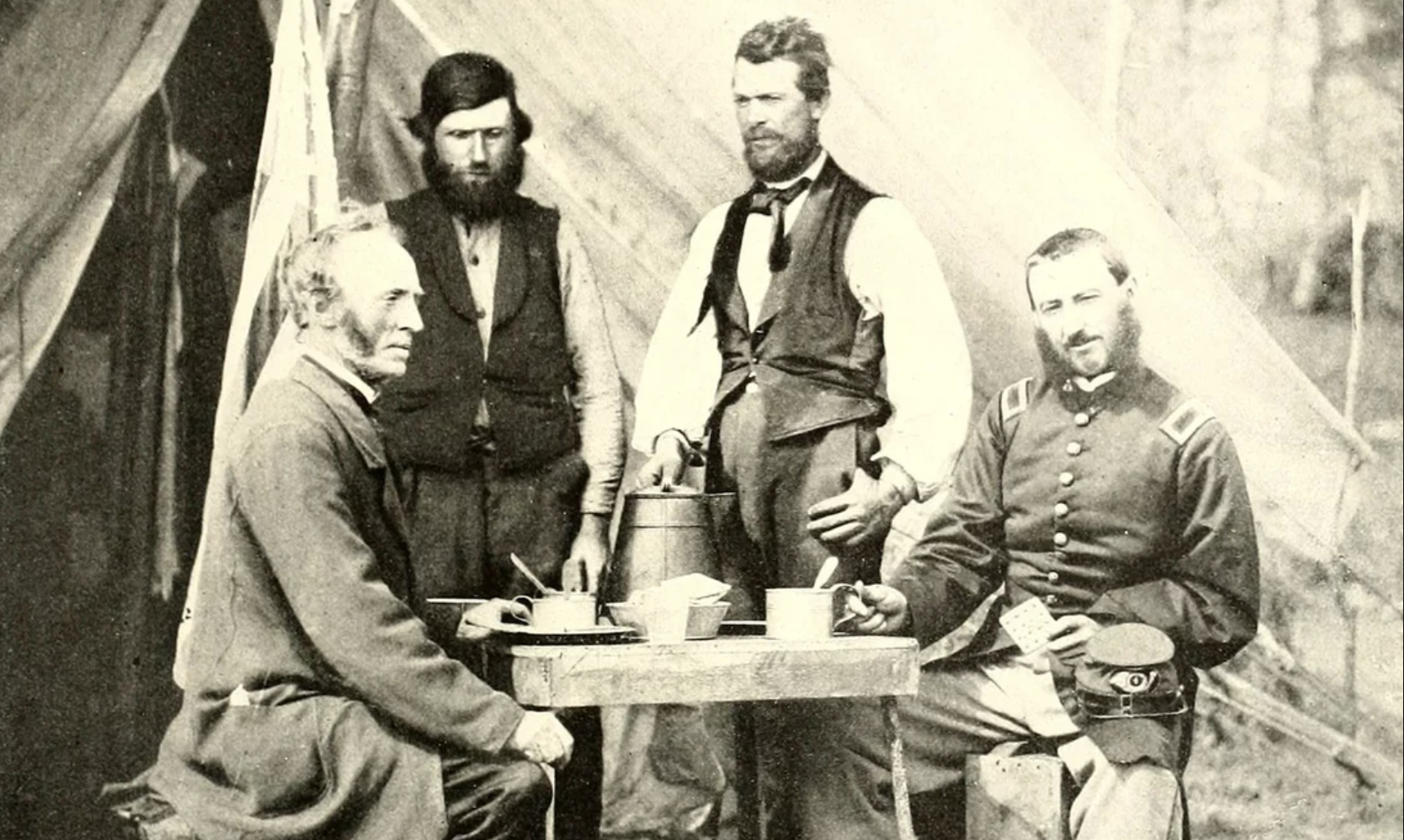[Most Recent Entries] [Calendar View]
Wednesday, July 3rd, 2024
| Time | Event |
| 7:30a | Ernest Hemingway’s Favorite Hamburger Recipe
In 2013, the food writer Cheryl Lu-Lien Tan stumbled across an article in the Boston Globe describing a trove of digitized documents from Ernest Hemingway’s home in Cuba that had been recently donated to the John F. Kennedy Presidential Library and Museum, home of Hemingway’s personal archives. One line in the article caught her eye: “And the more mundane, like his instructions to the household staff, including how to prepare his hamburgers: ground beef, onions, garlic, India relish, and capers, cooked so the edges were crispy but the center red and juicy.” Tan, a Hemingway fan and the author of A Tiger in the Kitchen: A Memoir of Food and Family, set out to find the recipe and try it. She reported her experiences on the Paris Review Daily blog. “I had made burgers before, countless times on countless evenings,” Tan writes. “This one was different; I wasn’t making just any burger — I was attempting to recreate Hemingway’s hamburger. And it had to be just right.” Here is Papa’s favorite recipe for pan-fried hamburgers, as reported by Tan: Ingredients– 1 lb. ground lean beef 2 cloves, minced garlic 2 little green onions, finely chopped 1 heaping teaspoon, India relish 2 tablespoons, capers 1 heaping teaspoon, Spice Islands sage Spice Islands Beau Monde Seasoning — 1/2 teaspoon Spice Islands Mei Yen Powder — 1/2 teaspoon 1 egg, beaten in a cup with a fork About 1/3 cup dry red or white wine 1 tablespoon cooking oil What to do– Break up the meat with a fork and scatter the garlic, onion and dry seasonings over it, then mix them into the meat with a fork or your fingers. Let the bowl of meat sit out of the icebox for ten or fifteen minutes while you set the table and make the salad. Add the relish, capers, everything else including wine and let the meat sit, quietly marinating, for another ten minutes if possible. Now make your fat, juicy patties with your hands. The patties should be an inch thick, and soft in texture but not runny. Have the oil in your frying pan hot but not smoking when you drop in the patties and then turn the heat down and fry the burgers about four minutes. Take the pan off the burner and turn the heat high again. Flip the burgers over, put the pan back on the hot fire, then after one minute, turn the heat down again and cook another three minutes. Both sides of the burgers should be crispy brown and the middle pink and juicy. Spice Islands stopped making Mei Yen Powder several years ago, according to Tan. You can recreate it, she says, by mixing nine parts salt, nine parts sugar and two parts MSG. “If a recipe calls for 1 teaspoon of Mei Yen Powder,” she writes, “use 2/3 tsp of the dry recipe (above) mixed with 1/8 tsp of soy sauce.” Hemingway’s widow, Mary, published the same basic recipe in 1966 in the sixth volume of the Woman’s Day Encyclopedia of Cookery. The one-pound of beef was intended for only two servings. For more on Hemingway’s hamburger recipe and his culinary tastes, including a fascinating list of gourmet foods he had shipped from New York to his home in Cuba, be sure to read Tan’s article at the Paris Review. Update: You can also now enjoy Ernest Hemingway’s Summer Camping Recipes. Related Content: The Recipes of Iconic Authors: Jane Austen, Sylvia Plath, Roald Dahl, the Marquis de Sade & More David Lynch Teaches You to Cook His Quinoa Recipe in a Strange, Surrealist Video How to Actually Cook Salvador Dali’s Surrealist Recipes: Crayfish, Prawns, and Spitted Eggs |
| 9:00a | How a Steady Supply of Coffee Helped the Union Win the U.S. Civil War
Americans doing “e‑mail jobs” and working in the “laptop class” tend to make much of the quantity of coffee they require to keep going, or even to get started. In that sense alone, they have something in common with Civil War soldiers. “Union soldiers were given 36 pounds of coffee a year by the government, and they made their daily brew everywhere and with everything: with water from canteens and puddles, brackish bays and Mississippi mud,” write NPR’s Kitchen Sisters. “The Confederacy, on the other hand, was decidedly less caffeinated. As soon as the war began, the Union blockaded Southern ports and cut off the South’s access to coffee.” Smithsonian National Museum of American History curator Jon Grinspan tells of how “desperate Confederate soldiers would invent makeshift coffees,” roasting “rye, rice, sweet potatoes or beets until they were dark, chocolaty and caramelized. The resulting brew contained no caffeine, but at least it was something warm and brown and consoling.” The stark caffeination differential that resulted must count as one of many factors that led to the Union’s ultimate victory. Part of what kept their coffee supplies robust was imports from Liberia, the African republic that had been established earlier in the nineteenth century by freed American slaves. “The Union’s ability to purchase and distribute coffee from Liberia, alongside other sources, was helping the army’s morale,” writes Bronwen Everill at Smithsonian.com. “In December 1862, one soldier wrote that ‘what keeps me alive must be the coffee.’ ” Meanwhile, a northern general famously gave this advice to other generals: “If your men get their coffee early in the morning, you can hold.” Many harrowing battles later, “at the Confederate surrender at Appomattox in April 1865, Michigan soldier William Smith noted that the Confederate soldiers present were licking their lips hopefully, with ‘a keen relish for a cup of Yankee coffee.’ ” (Johnny Reb had presumably acquired this taste between those battles, when soldiers from both sides would meet and exchange goods.) The Civil War in Four Minutes video above explains the coffee-drinking Yankee’s habits in more detail. “If there was an early morning march, the first order of business was to boil water and make coffee,” says actor-historian Douglas Ullman Jr. “If there was a halt along the march, the first order of business when the march stopped was to get that hot water going to drink more coffee.” Soldiers would keep their coffee and meager sugar rations in the same bag in order to ensure “the tiniest hint of sugar in every drop. Think about that the next time you order your caramel soy macchiato.” But such beverages were still a long way off after the Civil War, which gave way to the era of what we now call the Wild West — and with it, the heyday of cowboy coffee. Related content: How Humanity Got Hooked on Coffee: An Animated History Watch an Exquisite 19th Century Coffee Maker in Action The History of Coffee and How It Transformed Our World Philosophers Drinking Coffee: The Excessive Habits of Kant, Voltaire & Kierkegaard Based in Seoul, Colin Marshall writes and broadcasts on cities, language, and culture. His projects include the Substack newsletter Books on Cities and the book The Stateless City: a Walk through 21st-Century Los Angeles. Follow him on Twitter at @colinmarshall or on Facebook. |
| << Previous Day |
2024/07/03 [Calendar] |
Next Day >> |


